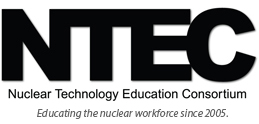N01: Reactor Physics, Criticality & Design
The unit aims to:
Provide students with a broad understanding of the physics of nuclear reactors, their systems and how the two interact in reactor operations. This is achieved by a combination of lectures on the physics involved, computer simulations to illustrate how the principles are used in practice, and peer-assisted learning on the details of reactor systems.
Brief description of the unit
The basic layout of a nuclear reactor is established. The key physics processes used in a reactor are developed, starting from neutron interactions and proceeding to the chain reaction and neutron life cycle, leading to the basic time behaviour. The spatial behaviour of the neutron flux is studied with the diffusion approximation and analysis of the flux shape in different geometries. Energy dependence is considered with the multigroup approach, which leads in to the study of reactivity feedback and reactor dynamics. Methods of reactivity control are studied with simple models and their limitations are used to demonstrate the application of transport theory. Deterministic and Monte Carlo approaches are considered, from theoretical and computational points-of-view. The long-term effects of reactor operation are studied, covering fuel burn-up, reactivity effects, poisons, decay heat and waste. Students’ knowledge of reactor systems will be developed in part with assessed presentations on specific reactor designs, enabling peer-assisted learning. The fundamental principles of reactor operations are discussed, along with material on reactor safety and accidents.
Intended Learning Outcomes
| Describe the key design features of different nuclear reactor systems and classify them accordingly |
| Calculate nuclear reaction rates and multiplication factors by use of the neutron life cycle |
| Estimate the time-behaviour of neutron flux and power in a nuclear reactor, incorporating the effects of reactivity feedback |
| Approximate the spatial behaviour of neutrons by the use of diffusion theory in both one and multigroup forms |
| Analyse the effects of reactivity control mechanisms |
| Justify the use of neutron transport theory, explaining the model and approaches to its solution |
| Analyse the effects of burnup and transmutation on reactor operation and control, and describe its effects on the broader fuel cycle |
| Plan, produce and deliver a presentation on the details of a specific reactor design |
| Explain the methods used to achieve reactor safety and summarise the causes of important reactor accidents |
